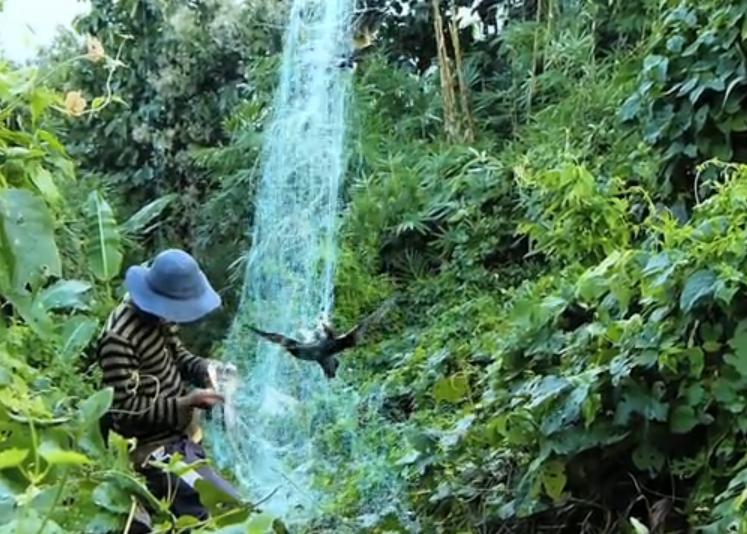Aizawl, Nov 30 : The reported increase of poverty in Mizoram is not realistic, according to some economists in the state. Economist Dr James L T Thanga said the apparent increase in poverty ratio in Mizoram is due to change in the methodology of poverty estimates as suggested by Tendulkar Committee and it is not a real increase in the number of the poor.
The professor, who was presenting a paper on 'Poverty Estimates in Mizoram' at the annual conference of Mizoram Economic Association, said jhum cultivators in the hilly state remained the hardest hit by the scourges of poverty and agriculture development is the key to helping the poor.
It may be noted that in the latest poverty estimates by the Planning Commission, Mizoram, along with its four other Northeast states - Assam, Meghalaya, Manipur and Nagaland are the only five states in the country where poverty has been reported to have increased between 2004-05 and 2009-10. As per the estimates, Nagaland saw the highest rise of 12.1 percentage points in poverty between 2004-05 and 2009-10, followed by Manipur (9.2 percentage points), Mizoram (5.7 percentage points), Assam (3.5 percentage points) and Meghalaya (1 percentage point). The economists' annual conference held at Savidge Hall, here on November 28, saw renowned economists presenting papers under the theme of 'Mizoram Economy: Issues, Concerns and Challenges.' Prof Tlanglawma, a noted Mizo economist, delivered the keynote address, in which he emphasised that mechanism to curb corruption was the need of the hour to fight poverty.
"The need of the hour is developing a work culture that addresses the menace of corruption. If only ten percent of allotted budget is utilized for road maintenance, for instance, how could we ever have a good road," he observed. Prof Lianzela, in his paper on 'Industrial Sector in Mizoram,' highlighted various dimensions of industrial development in the state. "Mizo entrepreneurs are coming forward and with proper support from the government, they could make a huge contribution in the economy," said Prof Lianzela.
Prof Vanlalchhawna, who presented a paper on 'Mizoram State Finances', observed that while FRBM Act had a positive impact on state financial management, recent increase in fiscal deficit is unsustainable and need immediate strong measures to contain it.
Dr JV Nunchunga, who gave a detailed account of the development in service sector, observed that service sector is now the key sector of the economy with a share of more than 60 per cent of GSDP.
Dr Lalhriatpui also observed in her paper on Forest and Biodiversity Management that sustainable exploitation and judicious use is the key to managing our scare natural resources.
The professor, who was presenting a paper on 'Poverty Estimates in Mizoram' at the annual conference of Mizoram Economic Association, said jhum cultivators in the hilly state remained the hardest hit by the scourges of poverty and agriculture development is the key to helping the poor.
It may be noted that in the latest poverty estimates by the Planning Commission, Mizoram, along with its four other Northeast states - Assam, Meghalaya, Manipur and Nagaland are the only five states in the country where poverty has been reported to have increased between 2004-05 and 2009-10. As per the estimates, Nagaland saw the highest rise of 12.1 percentage points in poverty between 2004-05 and 2009-10, followed by Manipur (9.2 percentage points), Mizoram (5.7 percentage points), Assam (3.5 percentage points) and Meghalaya (1 percentage point). The economists' annual conference held at Savidge Hall, here on November 28, saw renowned economists presenting papers under the theme of 'Mizoram Economy: Issues, Concerns and Challenges.' Prof Tlanglawma, a noted Mizo economist, delivered the keynote address, in which he emphasised that mechanism to curb corruption was the need of the hour to fight poverty.
"The need of the hour is developing a work culture that addresses the menace of corruption. If only ten percent of allotted budget is utilized for road maintenance, for instance, how could we ever have a good road," he observed. Prof Lianzela, in his paper on 'Industrial Sector in Mizoram,' highlighted various dimensions of industrial development in the state. "Mizo entrepreneurs are coming forward and with proper support from the government, they could make a huge contribution in the economy," said Prof Lianzela.
Prof Vanlalchhawna, who presented a paper on 'Mizoram State Finances', observed that while FRBM Act had a positive impact on state financial management, recent increase in fiscal deficit is unsustainable and need immediate strong measures to contain it.
Dr JV Nunchunga, who gave a detailed account of the development in service sector, observed that service sector is now the key sector of the economy with a share of more than 60 per cent of GSDP.
Dr Lalhriatpui also observed in her paper on Forest and Biodiversity Management that sustainable exploitation and judicious use is the key to managing our scare natural resources.















